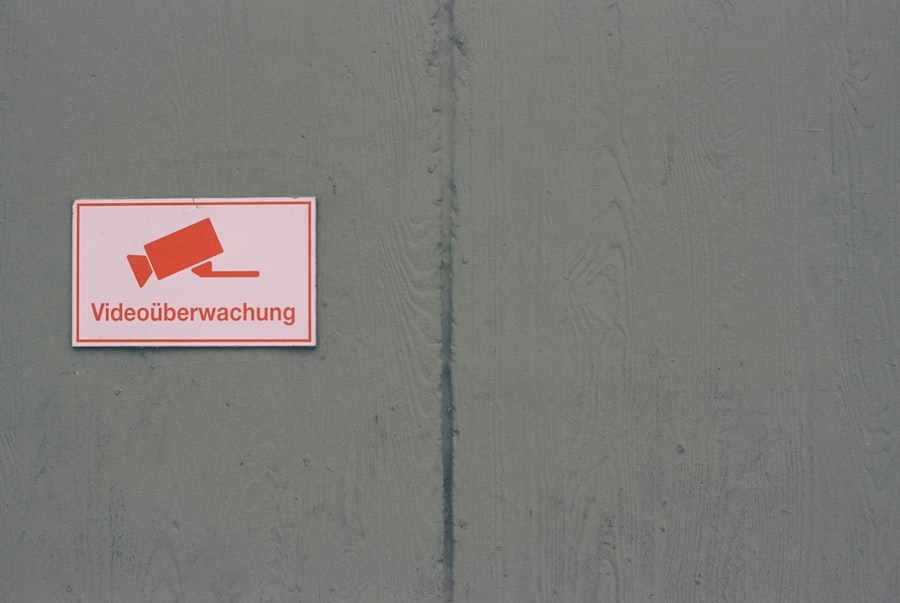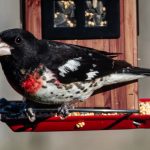Keeping chickens and dogs together can be a rewarding experience for pet owners. Both animals offer companionship, entertainment, and practical benefits such as fresh eggs and pest control. However, successful cohabitation requires understanding the unique instincts and behaviors of both species.
With proper training, supervision, and management, dogs and chickens can peacefully coexist. Chickens are social animals that thrive in flocks. They establish a pecking order and communicate through vocalizations and body language.
Chickens have strong instincts to forage for food, scratch the ground, and roost in elevated areas. Dogs, conversely, are pack animals with predatory instincts. They are known for their loyalty, protectiveness, and trainability.
Understanding these natural behaviors and instincts is crucial for creating a safe and harmonious environment for both chickens and dogs to live together.
Table of Contents
- 1 Understanding the Instincts of Dogs and Chickens
- 2 Introducing Dogs to Chickens
- 3 Supervising Interactions Between Dogs and Chickens
- 4 Providing Separate Spaces for Dogs and Chickens
- 5 Training Dogs to Respect Chickens
- 6 Tips for Keeping a Harmonious Environment for Dogs and Chickens
- 7 FAQs
- 7.1 Can chickens and dogs live together peacefully?
- 7.2 How can I introduce my dog to my chickens?
- 7.3 What breeds of dogs are best for living with chickens?
- 7.4 How can I train my dog to be gentle with my chickens?
- 7.5 What precautions should I take to keep my chickens safe around my dog?
- 7.6 What are some signs that my dog may not be suitable for living with chickens?
Key Takeaways
- Keeping chickens and dogs together can be a rewarding experience, but it requires careful management and understanding of both animals’ instincts.
- Dogs have a natural prey drive, while chickens have a natural fear of predators, so it’s important to introduce them slowly and carefully.
- Supervision is crucial when allowing dogs and chickens to interact, as even well-behaved dogs can become overly excited and accidentally harm the chickens.
- Providing separate spaces for dogs and chickens, such as secure coops and fenced-in areas, can help prevent conflicts and keep both animals safe.
- Training dogs to respect chickens through positive reinforcement and consistent boundaries can help create a harmonious environment for both animals.
Understanding the Instincts of Dogs and Chickens
Foraging Instincts and Prey Drive
Chickens have a natural instinct to peck at anything that catches their eye, including shiny objects, small insects, or even each other. This behavior is part of their foraging instinct and can sometimes lead to conflicts with dogs. Dogs, on the other hand, have a strong prey drive and may see chickens as potential targets for chasing or even hunting.
Roosting Behavior
Chickens also have a natural instinct to roost in elevated areas, such as trees or perches. This behavior helps them feel safe from predators and allows them to rest comfortably.
Creating a Safe Environment
Dogs may see chickens roosting as an opportunity to play or investigate, which can lead to stress or injury for the chickens. Understanding these natural behaviors can help pet owners create a safe and comfortable environment for both dogs and chickens to coexist peacefully. By recognizing and accommodating these instincts, pet owners can ensure a harmonious coexistence between their feathered and furry friends.
Introducing Dogs to Chickens
When introducing dogs to chickens for the first time, it’s important to do so in a controlled and supervised manner. Start by keeping the dog on a leash and allowing the chickens to roam freely within a fenced area. This will allow the dog to observe the chickens from a safe distance and begin to understand their presence without feeling the urge to chase or attack them.
It’s important to remain calm and assertive during this introduction, as dogs can pick up on their owner’s emotions and reactions. It’s also important to gauge the dog’s reaction to the chickens during this initial introduction. Some dogs may show immediate interest or excitement, while others may be more cautious or indifferent.
Pay attention to the dog’s body language, such as raised hackles, stiff posture, or intense focus on the chickens. These signs can indicate that the dog may not be ready for unsupervised interactions with the chickens and may require further training and socialization.
Supervising Interactions Between Dogs and Chickens
Even after an initial introduction, it’s crucial to supervise all interactions between dogs and chickens until you are confident that they can coexist peacefully. This means keeping a close eye on the dog’s behavior around the chickens and intervening if necessary. It’s important to set clear boundaries for the dog and teach them to respect the chickens’ space and safety.
During supervised interactions, pay attention to the dog’s body language and behavior. Signs of aggression or predatory behavior, such as stalking, lunging, or growling, should be addressed immediately with firm commands and redirection. It’s also important to reward positive behavior from the dog, such as calmness or disinterest in the chickens, with praise and treats.
Consistent supervision and positive reinforcement can help reinforce the desired behavior from the dog and create a safe environment for the chickens.
Providing Separate Spaces for Dogs and Chickens
In order to prevent potential conflicts or accidents, it’s important to provide separate spaces for dogs and chickens within the home or property. This can include designated areas for the chickens to roost, forage, and lay eggs without interference from the dog. Fencing can also be used to create secure enclosures for both animals, allowing them to coexist without direct contact.
For example, chickens can be provided with a secure coop or run that is inaccessible to the dog, while the dog can have their own designated area for exercise and play. This separation allows both animals to have their own space while still being able to interact from a safe distance. It’s important to ensure that both the chicken coop and dog area are secure and escape-proof to prevent any potential conflicts or accidents.
Training Dogs to Respect Chickens

Basic Obedience Training
Training is essential for teaching dogs to respect chickens and coexist peacefully with them. This can include basic obedience training, such as teaching the dog to come when called, sit, stay, and leave it commands. These commands can be used to redirect the dog’s attention away from the chickens and prevent any potential conflicts.
It’s also important to socialize the dog with the chickens on a regular basis in order to desensitize them to their presence. This can include supervised interactions where the dog is rewarded for calm behavior around the chickens.
Positive Reinforcement
Positive reinforcement is key in training dogs to respect chickens, as it helps create positive associations with the presence of the chickens. By rewarding the dog for calm behavior, you can help them understand that the chickens are not a threat and should be treated with respect.
Tips for Keeping a Harmonious Environment for Dogs and Chickens
In addition to training and supervision, there are several tips for creating a harmonious environment for dogs and chickens to coexist: – Provide plenty of enrichment for both animals, such as toys for the dog and opportunities for the chickens to forage.
– Keep food and water sources separate for both animals to prevent competition or conflicts.
– Monitor the health of both animals regularly and seek veterinary care if needed.
– Create a predictable routine for both animals, including feeding times, exercise, and rest periods.
– Consider the individual personalities and temperaments of both animals when introducing them to each other.
– Be patient and consistent in training both animals to coexist peacefully. By understanding the instincts of dogs and chickens, introducing them in a controlled manner, supervising their interactions, providing separate spaces, training dogs to respect chickens, and following these tips, pet owners can create a harmonious environment for both animals to live together peacefully. With patience, consistency, and proper management, it is possible for dogs and chickens to coexist in a safe and enjoyable manner.
If you’re considering keeping chickens with dogs, it’s important to ensure that both animals can coexist peacefully. One helpful resource for this is an article on Poultry Wizard about where to put a chicken coop. This article provides valuable information on how to set up a safe and secure environment for your chickens, which is essential when introducing them to a household with dogs. It also offers tips on how to integrate the coop into your existing outdoor space, which can help create a harmonious living arrangement for both your chickens and dogs. Check out the article here.
FAQs
Can chickens and dogs live together peacefully?
Yes, with proper training and supervision, chickens and dogs can coexist peacefully.
How can I introduce my dog to my chickens?
Introduce your dog to the chickens while on a leash and under close supervision. Use positive reinforcement to reward calm and gentle behavior around the chickens.
What breeds of dogs are best for living with chickens?
Breeds that have a lower prey drive and are known for their gentle nature, such as Golden Retrievers, Labrador Retrievers, and Poodles, are often better suited for living with chickens.
How can I train my dog to be gentle with my chickens?
Consistent training, positive reinforcement, and supervision are key to teaching your dog to be gentle with the chickens. Use commands such as “leave it” and “gentle” to reinforce good behavior.
What precautions should I take to keep my chickens safe around my dog?
Provide a secure coop and run for the chickens to retreat to, and supervise interactions between the dog and chickens at all times. Additionally, keep food and water for the chickens out of reach of the dog.
What are some signs that my dog may not be suitable for living with chickens?
Signs that your dog may not be suitable for living with chickens include a strong prey drive, aggressive behavior towards small animals, and an inability to respond to training and commands around the chickens.
Meet Walter, the feathered-friend fanatic of Florida! Nestled in the sunshine state, Walter struts through life with his feathered companions, clucking his way to happiness. With a coop that’s fancier than a five-star hotel, he’s the Don Juan of the chicken world. When he’s not teaching his hens to do the cha-cha, you’ll find him in a heated debate with his prized rooster, Sir Clucks-a-Lot. Walter’s poultry passion is no yolk; he’s the sunny-side-up guy you never knew you needed in your flock of friends!







